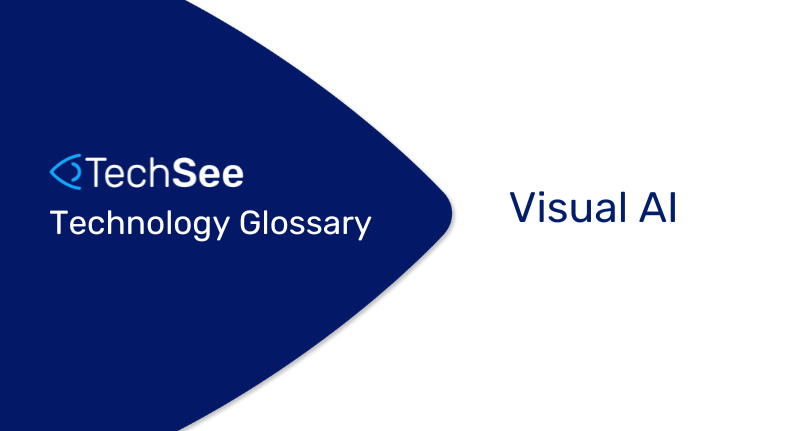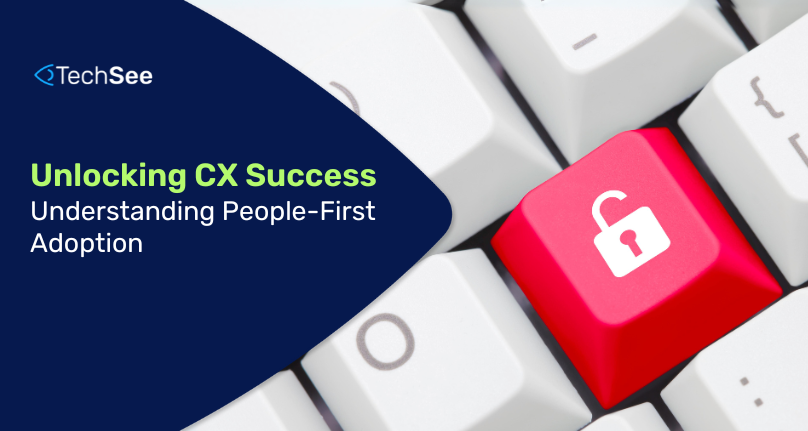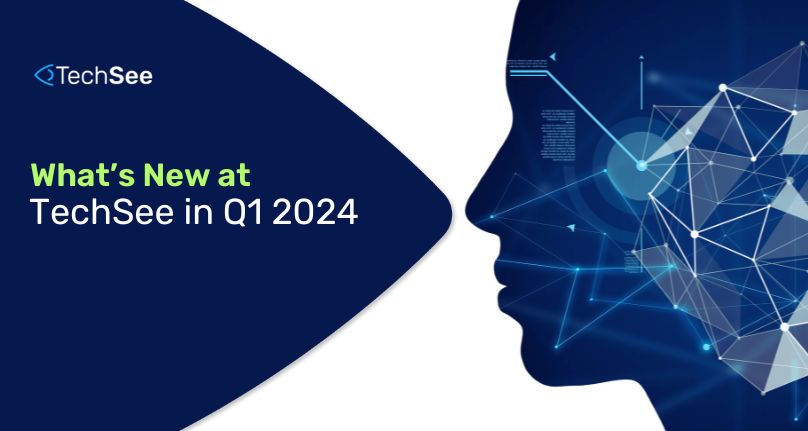Visual AI, short for Visual Artificial Intelligence, is a technology that combines the power of artificial intelligence (AI) with visual data analysis. In the service industry context, Visual AI revolutionizes how service organizations interact with their customers. It allows AI to “see” what the customer sees in real-time, automatically reading text, identifying specific makes and models, diagnosing issues and using AR to visually guide users. Visual AI helps both agents and customers resolve issues more accurately and far more easily.
TechSee and Visual AI in the Service Industry
TechSee is at the forefront of Visual AI innovation. Our visual service technology empowers service organizations by bridging the gap between customers and the brand, ensuring faster and more efficient issue resolution for both assisted service and self-service. With our technology, service agents can remotely view the customer’s environment, identify problems, and use AI-driven insights to guide customers step-by-step toward a complete resolution.
Our integrated generative AI solutions, including CoPilot for agents and service automation for end customers, take the customer service experience to the next level. CoPilot equips agents with AI-driven recommendations, while service automation empowers customers with multi sensory AI-powered automation, leading to increased satisfaction and reduced support costs.
How does Visual AI work?
Visual AI, also called computer vision, is a field of artificial intelligence (AI) that focuses on enabling computers to interpret and understand visual information from the world, such as images and videos. It involves using algorithms and techniques to process visual data, extract meaningful information, and make decisions based on that information. Here’s a high-level overview of how computer vision works:
- Image Acquisition: The process begins with capturing visual data, typically in the form of images or video frames, using cameras or other imaging devices.
- Preprocessing: Raw visual data may contain noise, variations in lighting, and other imperfections. Preprocessing techniques are applied to enhance the quality of the data, making it easier for the computer vision system to analyze.
- Feature Extraction: Computer vision algorithms identify and extract important features from the visual data. These features include edges, corners, textures, colors, shapes, or more complex patterns.
- Feature Representation: The extracted features are transformed into a mathematical representation that machine learning algorithms can process. This representation is often in the form of vectors or matrices.
- Learning and Training: Many computer vision tasks, such as object recognition, image classification, and object tracking, involve machine learning. Supervised learning involves training a model using labeled data (data with known outcomes), while unsupervised learning seeks to find patterns without labeled data.
- Inference and Decision Making: Once the model is trained, it can make predictions or decisions based on new, unseen visual data. For example, in object recognition, the system can identify objects in images by comparing the features of the new data with the patterns it learned during training.
- Postprocessing: The output of the computer vision system may undergo further processing to refine the results, filter noise, or extract additional information.
- Application: Computer vision has numerous applications across various industries, including robotics, healthcare, automotive, agriculture, manufacturing, security, and, as in the case of TechSee, customer service. It enables machines to interpret and interact with the visual world, enabling tasks that humans traditionally performed.
It’s important to note that computer vision is a rapidly advancing field, and its capabilities continue to grow as new algorithms, deep learning techniques, and hardware improvements emerge. TechSee’s Visual AI, for example, leverages computer vision to empower service agents and customers with real-time visual insights, enabling more effective issue resolution and support.





